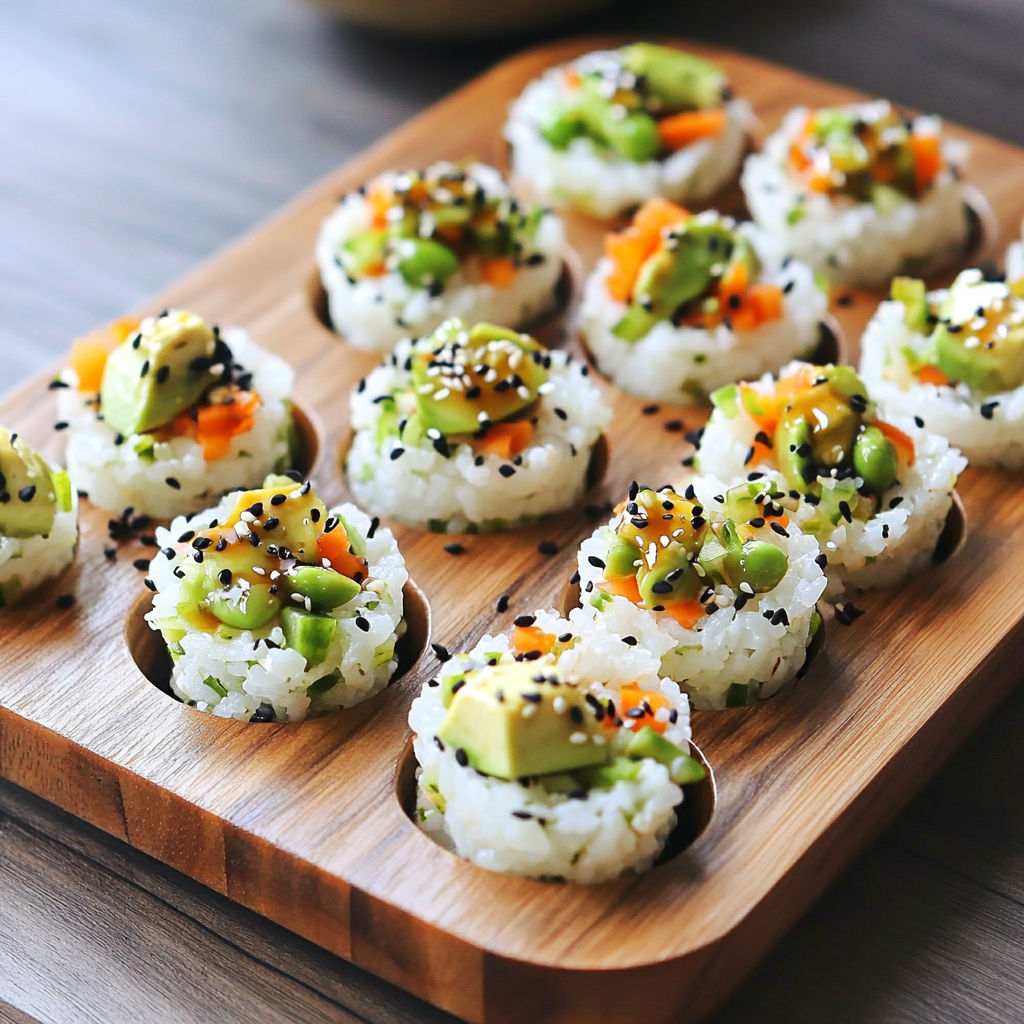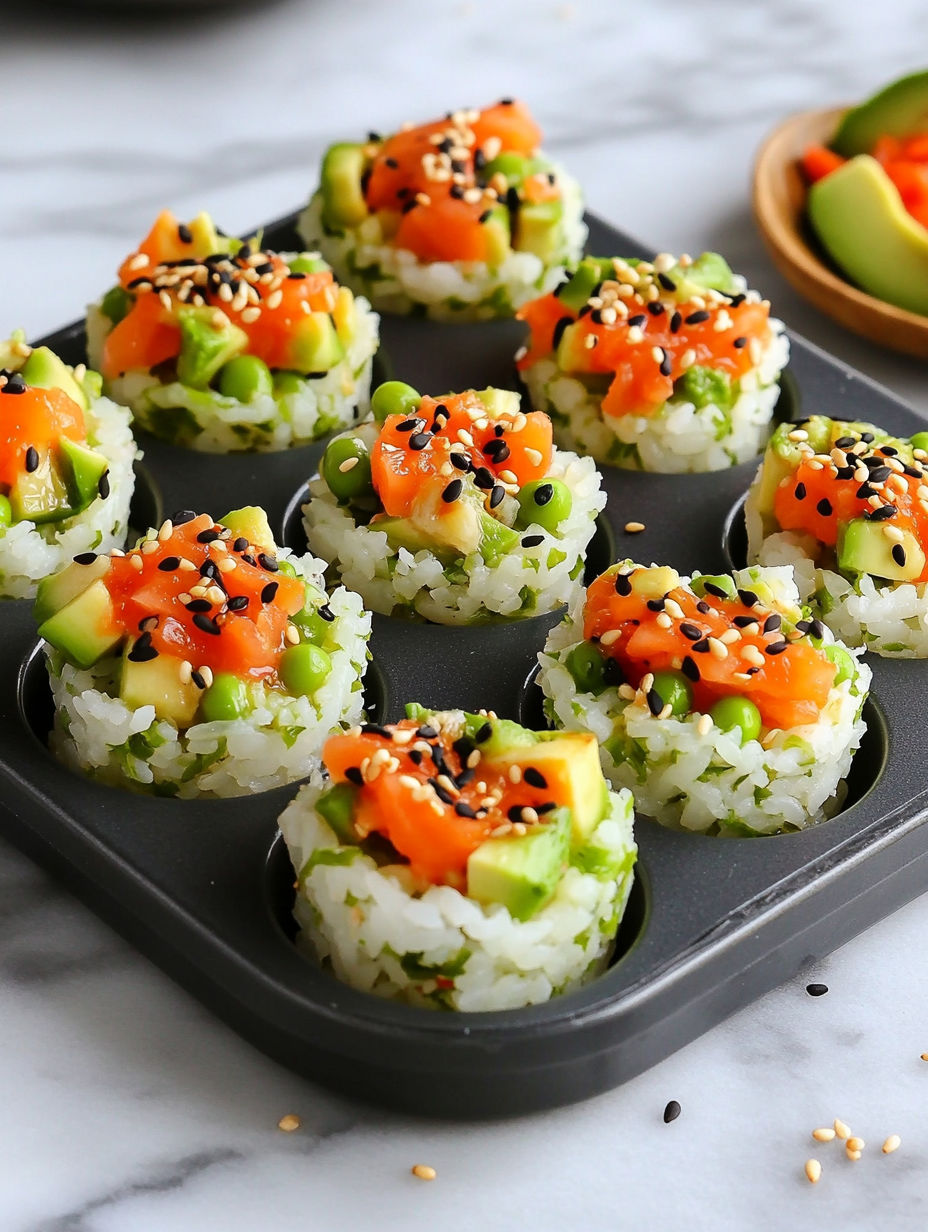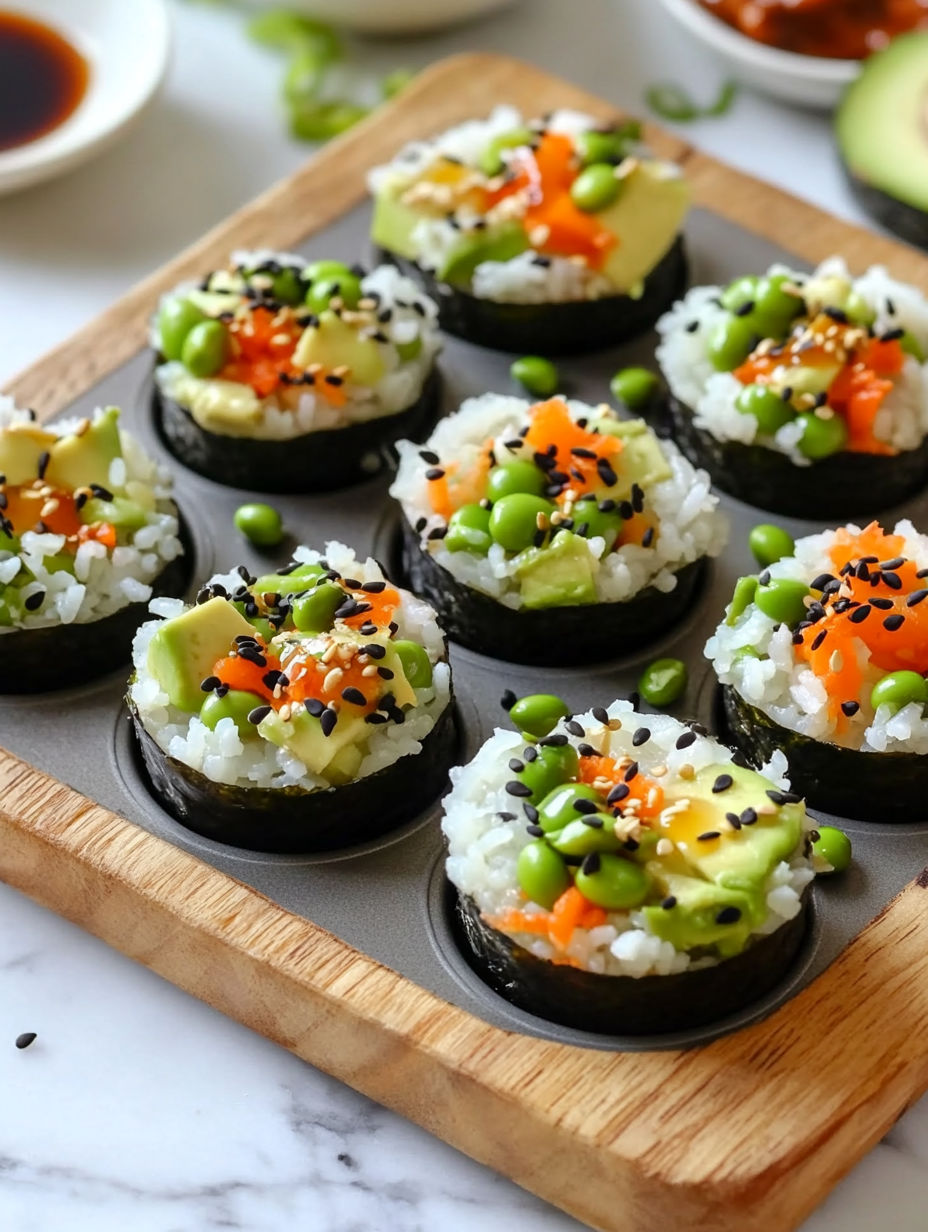 Bookmark
Bookmark
Sushi cups offer all the joy of sushi in a fun, handheld form without the hassle of rolling. These little rice bowls fill up with crisp veggies, creamy avocado, and a drizzle of spicy mayo, making them a delicious snack or impressive appetizer. They come together quickly and require no baking, perfect for busy days or serving guests.
I first made these sushi cups when I craved sushi but didn't want to fuss with rolling and slicing. Now, they have become my go—to quick snack that impresses friends and keeps lunch exciting.
Ingredients
- Sushi rice, short—grain: sticky texture ideal for forming cups rinse well to avoid clumping
- Fresh veggies: add crunch and nutrients choose crunchy, raw-friendly options like cucumber or carrots
- Shelled edamame (mukimame): high in protein and fiber adds a satisfying bite frozen is convenient and easy to steam
- Avocado: adds creaminess and healthy fats use ripe but firm avocados for best texture
- Soy sauce: brings umami depth look for low sodium versions if preferred
- Mayonnaise: base for spicy mayo light mayo works well for a healthier twist
- Sriracha sauce: lends heat and flavor adjust amount to match your spice tolerance
- Honey: balances the spice with a touch of sweetness fresh and pure honey is best
- Sesame oil: small splash enhances aroma and flavor use toasted variety for a nutty note
- Black sesame seeds: for garnish and mild nuttiness fresh seeds add color contrast
Instructions
- Cook the Rice:
- Rinse the sushi rice under cold water until the water runs clear to remove excess starch. In a pot, combine the rinsed rice with the appropriate amount of water. Bring to a gentle boil, then lower the heat to simmer and cover with a tight—fitting lid. Cook for about 18 minutes until the water is fully absorbed and rice is tender but not mushy. Let it rest covered off the heat for 10 minutes to finish steaming.
- Press into Cups:
- While the rice is still warm but cool enough to handle, spoon it into silicone muffin liners or a muffin tin. Press firmly with the back of your spoon or your fingers to shape a hollow cup with the rice. The sticky texture will hold the shape. Wet your spoon or hands slightly if the rice starts to stick too much.
- Prepare Veggies:
- In a bowl, combine your choice of freshly chopped vegetables like cucumber, bell peppers, or carrots with steamed mukimame and diced avocado. Toss gently with a drizzle of soy sauce to add seasoning without overpowering the flavors.
- Assemble:
- Spoon the veggie mixture gently into each rice cup, filling it nicely but without overpacking. Drizzle the spicy mayo over the top by combining mayonnaise, sriracha, and honey in a small bowl until smooth and balanced. Finish by sprinkling black sesame seeds for color and a subtle crunch.

My favorite ingredient is the mukimame because its mild nuttiness and satisfying bite perfectly complement the creamy avocado and crisp veggies. I remember serving these sushi cups at a family brunch and everyone loved how easy and fun they were to eat. They definitely beat the usual finger food fare.
Storage Tips
Sushi cups taste best when eaten fresh but can be prepared up to 24 hours ahead. Store the rice cups and veggie topping separately in airtight containers in the fridge to avoid sogginess. Assemble just before serving for optimal texture.
Ingredient Substitutions
If you cannot find mukimame, use shelled regular edamame or even shelled peas as a protein—rich alternative. Swap sriracha for another hot sauce like chile garlic for different heat profiles. You can replace mayonnaise with Greek yogurt for a lighter sauce.
Serving Suggestions
Pair sushi cups with pickled ginger and a small dish of soy sauce or tamari for dipping. Serve alongside green tea or sake to elevate the meal experience. These also work well as part of a tapas plate or appetizer spread.

These sushi cups are quick to assemble and endlessly adaptable, making them great for snacks or parties. Enjoy them fresh for the best texture.
Common Questions About the Recipe
- → What kind of rice works best for sushi cups?
Short-grain sushi rice is ideal because it’s sticky enough to hold the cup shape when pressed.
- → Can I prepare sushi cups ahead of time?
Yes, sushi cups can be made up to 24 hours in advance and stored airtight, best eaten within 2 days for freshness.
- → What is mukimame in sushi cups?
Mukimame is shelled edamame, adding protein and a tender bite to the veggie mix in sushi cups.
- → How can I prevent rice from sticking to tools when shaping cups?
Wet your spoon or pressing tool slightly before shaping rice cups to avoid sticking.
- → What sauces pair well with sushi cups?
Soy sauce, tamari, or coconut aminos complement sushi cups, plus a spicy mayo drizzle adds flavor and creaminess.
